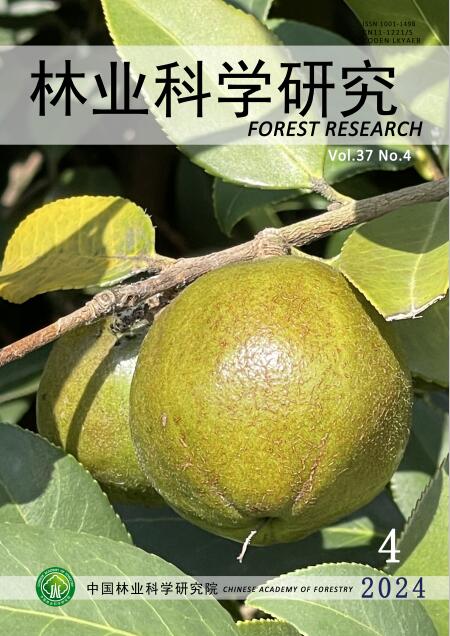东德克萨斯中期轮作火炬松人工林对家禽凋落物和化肥施肥的响应
Q4 Agricultural and Biological Sciences
引用次数: 0
摘要
通过施肥改善立地质量是一种常见的林业做法。在家禽生产的地方,一个常见的问题是处理家禽垃圾,这可能导致某些土壤上的养分过载。森林种植园提供了另一种凋落物处理地点,同时提供了可能的树木生长增长,类似于化学肥料。为了验证这一假设,在美国德克萨斯州东部3个支持火炬松(Pinus taeda)人工林的地点,在轮作中期施用家禽或化肥,并记录了4年期间的生长响应。3个地点中只有1个在4年后的二次平均直径生长中显示出任何生长响应。没有发现其他显著的反应,这表明可能会出现比本研究捕获的更长期的反应。在经济上可行的情况下,家禽粪便似乎是这些地点石油化学肥料的替代品。本文章由计算机程序翻译,如有差异,请以英文原文为准。
Response of East Texas Mid-Rotation Loblolly Pine Plantations to Poultry Litter and Chemical Fertilizer Amendments
Improving site quality with fertilization is a common forestry practice. Where poultry production occurs, a common issue is the disposal of the poultry litter, which can cause nutrient overload on some soils. Forest plantations offer an alternative litter disposal site, while providing for possible tree growth increases similar to those found with chemical fertilizers. To test that hypothesis, 3 sites in east Texas, USA supporting loblolly pine (Pinus taeda) plantations were treated at poultry or chemical fertilizers at mid-rotation, and the growth responses recorded over a four-year period. Only one of the three sites showed any growth response in quadratic mean diameter growth attributed to poultry litter, and that was only after four years. No other response was found significant, suggesting that longer-term responses may occur than what this study captured. Poultry litter, if economically feasible, does appear to be an alternative to petro-chemical fertilizers on these sites.
求助全文
通过发布文献求助,成功后即可免费获取论文全文。
去求助
来源期刊

林业科学研究
Environmental Science-Ecology
CiteScore
0.90
自引率
0.00%
发文量
4834
期刊介绍:
Forestry Research is a comprehensive academic journal of forestry science organized by the Chinese Academy of Forestry. The main task is to reflect the latest research results, academic papers and research reports, scientific and technological developments and information on forestry science mainly organized by the Chinese Academy of Forestry, to promote academic exchanges at home and abroad, to carry out academic discussions, to flourish forestry science, and to better serve China's forestry construction.
The main contents are: forest seeds, seedling afforestation, forest plants, forest genetic breeding, tree physiology and biochemistry, forest insects, resource insects, forest pathology, forest microorganisms, forest birds and animals, forest soil, forest ecology, forest management, forest manager, forestry remote sensing, forestry biotechnology and other new technologies, new methods, and to increase the development strategy of forestry, the trend of development of disciplines, technology policies and strategies, etc., and to increase the forestry development strategy, the trend of development of disciplines, technology policies and strategies. It is suitable for scientists and technicians of forestry and related disciplines, teachers and students of colleges and universities, leaders and managers, and grassroots forestry workers.
 求助内容:
求助内容: 应助结果提醒方式:
应助结果提醒方式:


